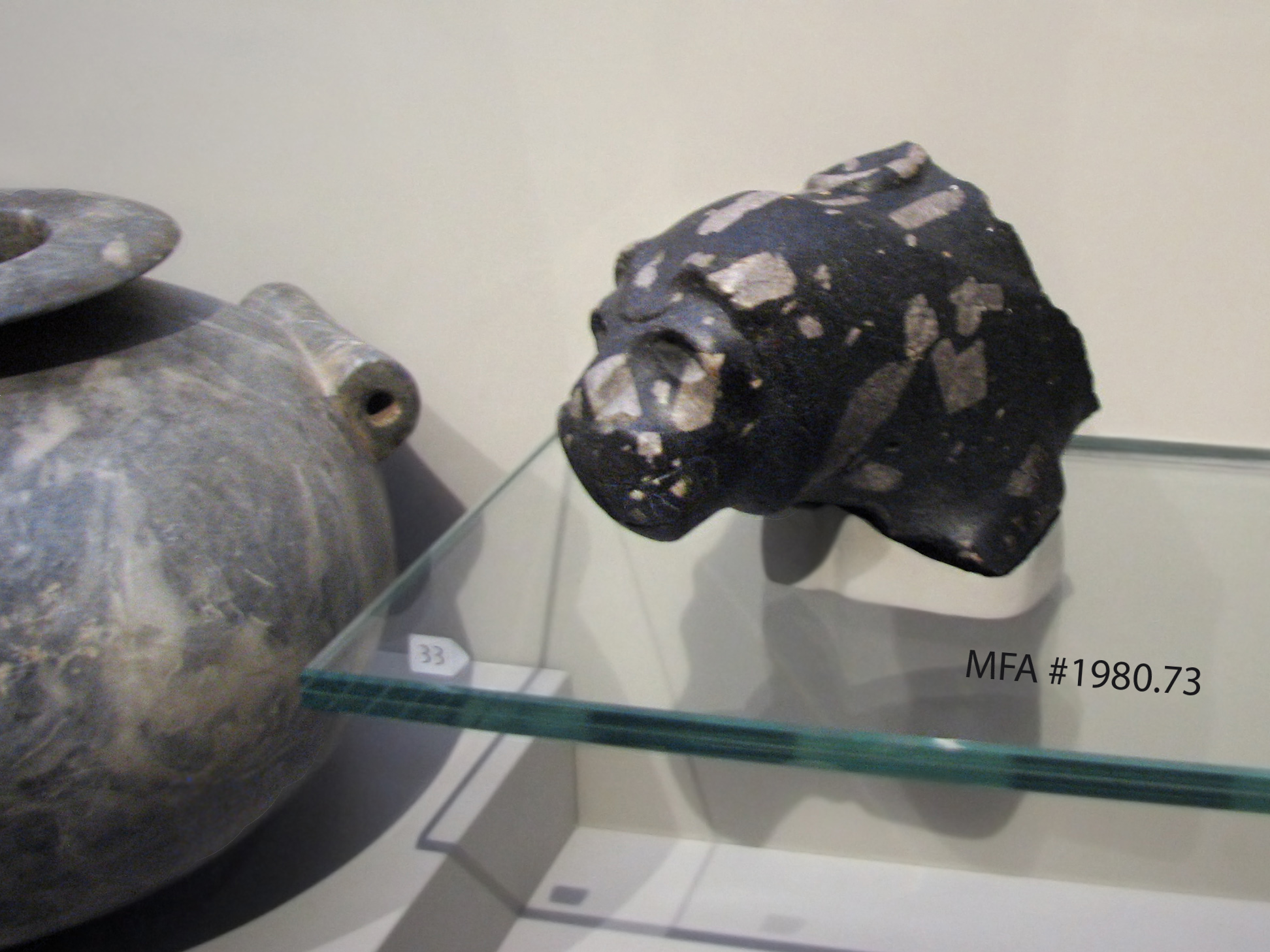
Forepart of a recumbent lion
Egypt, (possibly Gebelein), Dynasty 1, 2960-2770 B.C.E.
Andesite porphyry, Height x length: 13 x 13 cm (5 1/8 x 5 1/8 in.)
Egyptian Special Purchase Fund 1980, MFA #1980.73
Photo ©Joan Ann Lansberry, 2014
"The earliest three-dimensional stone sculpture in Egypt probably came from the same workshops that were producing stone vessels. This statuette of a lion is made of hard andesite porphyry, a material typically used in vessels. It probably served as a votive offering in a temple." (From info card)
"Although only the upper forepart of the lion has survived, his pose is clearly discernable. Like other lion figures of the period, he is crouched as if about to spring, with his head extended upward and forward and his snout curled back in a snarl. The ears poke up through the gently rounded mane. By contrast, the sculptor has rendered the bared teeth simply by means of crudely incised lines. Similarly stylized teeth are found on other contemporary lions, and despite their simple execution, they effectively convey the animal's ferocity. Originally, the deeply carved eyes were inlaid with another material, an unusual feature for animal sculptures of this date. The effect would surely have added both realism and intensity. The tail lies flat against the lion's back, and the curving tip remains visible behind the line of the mane." (From museum website)


